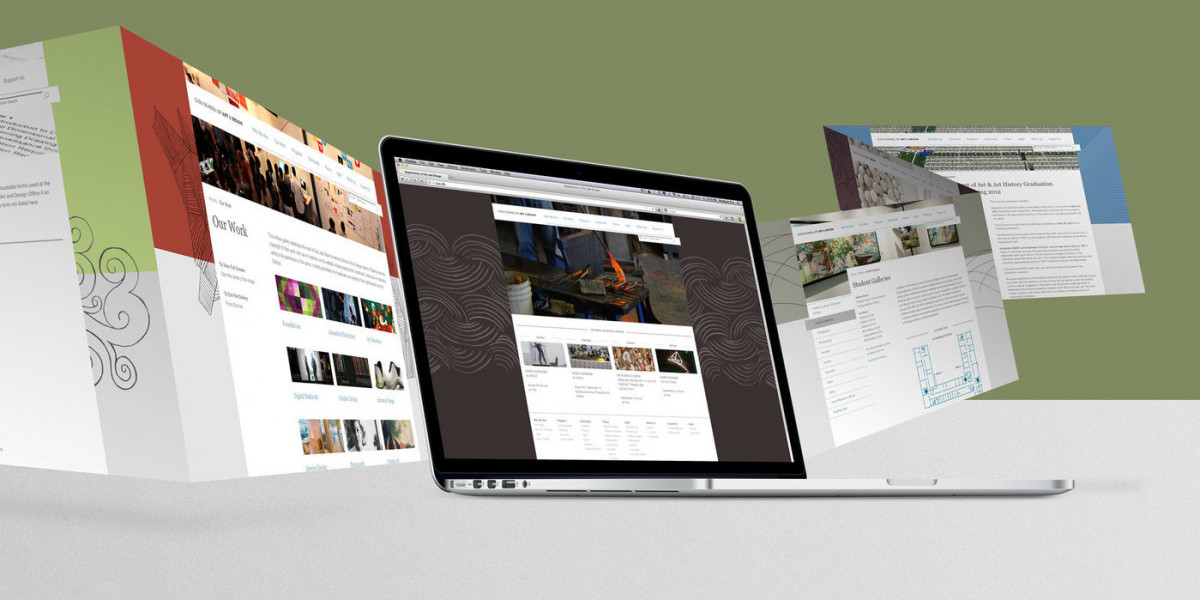In today’s digital-first world, a well-designed website is more than just an online presence—it’s a critical tool for business growth, user engagement, and brand credibility. As web technologies continue to evolve, developers must integrate key elements that define modern website development to create visually appealing, fast, and user-friendly experiences.
This guide explores the essential elements of a modern website design, helping developers craft websites that are functional, responsive, and optimized for performance.
1. Responsive and Mobile-First Design
With over half of global web traffic coming from mobile devices, a mobile-first approach is no longer optional. A modern website must:
Adapt to various screen sizes using responsive design techniques.
Use fluid grids and flexible images for seamless user experiences.
Ensure fast loading times on mobile networks.
Using frameworks like Bootstrap or Tailwind CSS makes it easier for developers to implement responsive layouts efficiently. Modern website development prioritizes user experience across all devices, ensuring accessibility and engagement.
2. Fast Loading Speed and Performance Optimization
Users expect websites to load in under three seconds, and search engines favor fast sites in rankings. To improve performance, developers should:
Optimize images using next-gen formats like WebP.
Minimize HTTP requests by reducing unnecessary scripts and stylesheets.
Implement lazy loading for images and videos.
Use Content Delivery Networks (CDNs) to speed up content delivery.
Google’s Core Web Vitals offers valuable insights into performance, and tools like Lighthouse and GTmetrix can help developers fine-tune speed.
3. Intuitive and User-Centric Navigation
A seamless user experience starts with an intuitive navigation system. Best practices include:
Clear menu structures with well-organized categories.
Breadcrumb navigation for better content discovery.
Sticky headers and dynamic menus for ease of access.
A search bar for quick information retrieval.
A modern website development strategy ensures that users can navigate effortlessly, reducing bounce rates and improving engagement.
4. Minimalist and Clean Design Aesthetics
Modern web design trends emphasize simplicity and usability over clutter. A clean, minimalist approach involves:
Whitespace usage to enhance readability.
Consistent typography for a polished look.
Well-structured content with clear headings and subheadings.
A limited color palette to maintain brand consistency.
Adopting a minimalist design makes a website visually appealing while ensuring a distraction-free experience for users.
5. SEO-Friendly Structure and Code
A well-optimized website not only looks good but also performs well in search engines. Developers should focus on:
SEO-friendly URLs with proper keyword placement.
Schema markup for better indexing and rich snippets.
Optimized meta tags and headers for on-page SEO.
Clean, semantic HTML for accessibility and search engine readability.
Following modern website development best practices ensures that websites rank higher in search results and attract organic traffic.
6. High-Quality Visuals and Media Integration
Users engage more with websites that include rich media elements such as:
High-resolution images that load quickly.
Embedded videos for product showcases or tutorials.
Interactive animations for enhanced storytelling.
Background videos and parallax scrolling for dynamic effects.
However, it’s crucial to balance aesthetics with performance by using optimized media files to prevent slow load times.
7. Security and Data Protection
Cybersecurity is a top priority in modern website development. Developers must ensure:
SSL certificates for encrypted data transfer.
Regular security updates and software patches.
Secure authentication methods (e.g., two-factor authentication).
Protection against SQL injection and cross-site scripting (XSS).
Implementing strong security measures protects user data and builds trust with visitors.
8. Cross-Browser Compatibility
A website should function correctly across all major browsers, including Chrome, Firefox, Safari, Edge, and Opera. Developers must:
Test sites using tools like BrowserStack or CrossBrowserTesting.
Use progressive enhancement to ensure core functionalities work everywhere.
Follow CSS and JavaScript best practices for compatibility.
Ensuring a consistent experience across browsers improves user retention and credibility.
9. Integration with Third-Party APIs and Services
A feature-rich website often relies on third-party integrations for extended functionality, such as:
Payment gateways (PayPal, Stripe) for e-commerce transactions.
Social media feeds to enhance engagement.
Google Maps for location-based services.
CRM and marketing tools like HubSpot or Mailchimp.
APIs enable developers to add powerful functionalities while keeping websites scalable.
10. Scalability and Future-Proofing
A website should be built to grow alongside a business. Developers can achieve scalability by:
Choosing modular frameworks like React, Angular, or Vue.js.
Implementing microservices architecture for complex applications.
Using cloud hosting solutions for high-traffic scalability.
Designing with future web standards in mind.
A scalable website ensures long-term success and minimizes the need for frequent redesigns.
11. Effective Call-to-Action (CTA) Placement
CTAs drive user actions, such as sign-ups, purchases, or inquiries. To optimize CTAs:
Use action-driven words like "Get Started," "Subscribe Now," or "Learn More."
Ensure high visibility with contrasting colors.
Place CTAs strategically above the fold and at key points in content.
A/B test CTA variations to identify the most effective versions.
A strong CTA strategy enhances conversions and user engagement.
12. Dark Mode Compatibility
With the rising popularity of dark mode, developers should offer:
User-friendly toggles to switch between light and dark themes.
Consistent UI elements that adapt to both modes.
Optimized contrast and readability for dark backgrounds.
Dark mode improves user comfort, reduces eye strain, and enhances the modern aesthetic of a website.
Conclusion
Building a modern website requires a combination of user-centric design, technical efficiency, and future-proof strategies. By focusing on responsive layouts, performance optimization, security, and SEO-friendly structures, developers can create websites that stand out in today’s competitive digital landscape.
A well-executed modern website development approach not only enhances user experience but also ensures long-term business success. Implementing these essential elements will help developers build high-performing, scalable, and visually stunning websites that meet the demands of today’s users.








